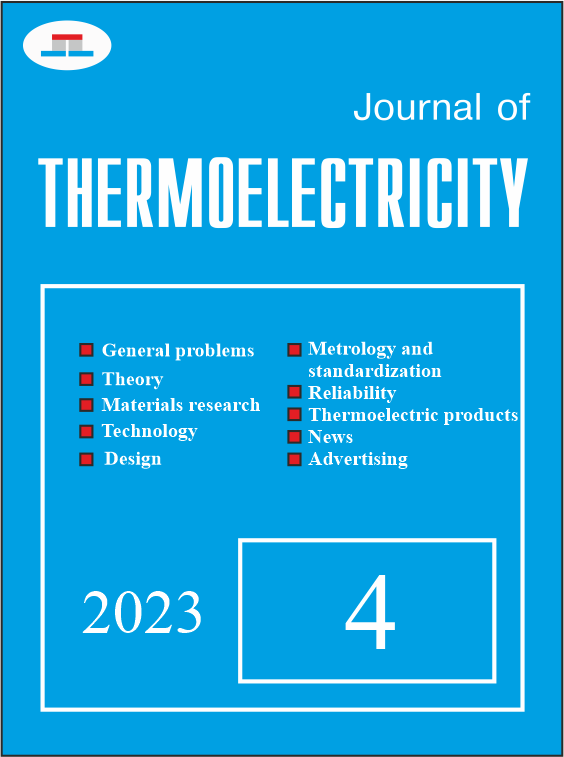Damping of thermo-mechanical stresses as a means of increasing the cyclic resistance of thermoelectric energy converters
DOI:
https://doi.org/10.63527/1607-8829-2023-4-17-26Keywords:
cyclic stability, thermoelectric energy converter, thermomechanical stresses, damping, material resistance, Weibull approach, cracking strength, stiffness of an elastic elementAbstract
Based on the combination of materials resistance methods with the Weibull approach, the requirements for stiffness coefficients of damping elements are determined, which can be used to reduce thermomechanical stresses in thermoelectric branches in order to increase the cyclic stability of thermoelectric energy converters. The Coffin-Manson power-law model for the dependence of the acceleration factor in the presence of cyclic temperature effects on the temperature drop is substantiated. The results of calculations are not only in qualitative, but also in satisfactory quantitative agreement with experimental data.
References
1. Anatychuk L.I., Balaziuk V.M., Luste O.J., Malyshko V.V., Mikhalchenko V.P. (2003). On increasing the cyclic stability of thermoelectric cooling modules. J. Thermoelectricity, 4, 71 – 75.
2. Setty K., Sabbarayan G., Nguyen L. (2005). Power cycling reliability, failure analysis and acceleration factors of Pb-free solder joints. Proceedings Electronic components and Technology Conference, Р. 907 – 915.
3. Pisarenko H.S., Kvitka O.L, Umanskyi E.S. (2004). Strength of materials: manual. Kyiv: Vyshcha shkola.
4. Sabo E.P. (2006). Mechanisms that determine the resource capabilities of thermoelectric converters. J. Thermoelectricity, 2, 59 – 70.
5. Karri N.K., Mo C. (2018). Reliable thermoelectric module design under opposing requirements from structural and thermoelectric considerations. Journal of Electronic Materials, 47, 3127 – 3135.
6. Park W., Barako M.T., Marconnet A.M., Asheghi M., Goodson K.E. (2012). Effect of thermal cycling on commercial thermoelectric modules. 13th IEEE ITHERM Conference. (San Diego, CA, USA, 30 May 2012 – 01 June 2012).
7. Wereszczak A.A., Case E.D. (2015). Mechanical response of thermoelectric materials. Oak Ridge, TN: ORNL/TM-2015/227, U.S. Department of Energy.
8. US Patent No 4011104 (1977). A. Basilius. Thermoelectric system.




